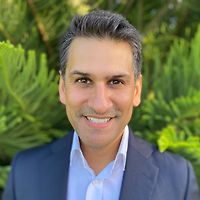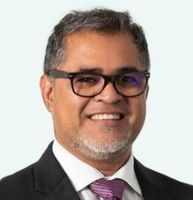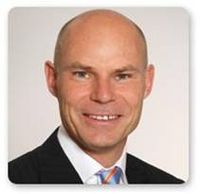South Auckland, Central Auckland > Public Hospital Services > Te Whatu Ora – Health New Zealand Te Toka Tumai Auckland >
Oral & Maxillofacial Surgery - Regional Service | Auckland | Te Toka Tumai | Te Whatu Ora
Public Service, Oral & Maxillofacial Surgery
Today
Description
Formerly Auckland DHB Oral & Maxillofacial Surgery - Regional Service
The Maxillofacial service is a regional service based at Middlemore Hospital and provides services to the wider Auckland region.
Oral and maxillofacial surgery is the surgical specialty which involves the diagnosis and treatment of diseases, injuries and defects affecting the mouth, jaws, face and neck.
Oral and maxillofacial surgeons treat impacted teeth, cancer patients requiring dental implants, jaw joint problems, salivary gland disease, dental infections, facial deformity and abnormal bite, oral cancer, other tumours and cysts of the jaws and facial trauma following accidents.
Consultants
-

Mr Richard Cobb
Oral and Maxillofacial Surgeon
-

Dr John Harrison
Oral and Maxillofacial Surgeon
-

Mr Rakesh Jattan
Oral and Maxillofacial Surgeon
-

Dr James Olsen
Oral and Maxillofacial Surgeon
-

Dr Chris Sealey
Oral and Maxillofacial Surgeon
-

Mr Ryan Smit
Oral and Maxillofacial Surgeon
Hours
| Mon – Fri | 8:30 AM – 4:30 PM |
|---|
Services Provided
Benign tumours and cysts of the mouth, jaws and related structures are usually treated by surgery.
Benign tumours and cysts of the mouth, jaws and related structures are usually treated by surgery.
Benign tumours and cysts of the mouth, jaws and related structures are usually treated by surgery.
Gum tissue at the site of the implant is opened up to expose the bone. The bone is drilled and a titanium implant is inserted where the root of your tooth had been. Once the bone and gum has healed (3-6 months), the post is attached to the implant and the crown is placed over the post and cemented into place.
Gum tissue at the site of the implant is opened up to expose the bone. The bone is drilled and a titanium implant is inserted where the root of your tooth had been. Once the bone and gum has healed (3-6 months), the post is attached to the implant and the crown is placed over the post and cemented into place.
Gum tissue at the site of the implant is opened up to expose the bone. The bone is drilled and a titanium implant is inserted where the root of your tooth had been. Once the bone and gum has healed (3-6 months), the post is attached to the implant and the crown is placed over the post and cemented into place.
Dental infections are common and usually minor. They can however, spread to the cheek, throat and neck. Management involves admission, removal of the cause, drainage and antibiotics. Sometimes admission to the intensive care ward is necessary.
Dental infections are common and usually minor. They can however, spread to the cheek, throat and neck. Management involves admission, removal of the cause, drainage and antibiotics. Sometimes admission to the intensive care ward is necessary.
Dental infections are common and usually minor. They can however, spread to the cheek, throat and neck. Management involves admission, removal of the cause, drainage and antibiotics. Sometimes admission to the intensive care ward is necessary.
Orthognathic surgery involves correcting the position of the jaws to improve facial appearance and the bite. Orthognathic surgery is often preceded by orthodontic treatment.
Orthognathic surgery involves correcting the position of the jaws to improve facial appearance and the bite. Orthognathic surgery is often preceded by orthodontic treatment.
Orthognathic surgery involves correcting the position of the jaws to improve facial appearance and the bite. Orthognathic surgery is often preceded by orthodontic treatment.
Surgical management of fractures of the jaws, cheekbones, and eye-sockets is undertaken at Middlemore and Auckland City Hospitals.
Surgical management of fractures of the jaws, cheekbones, and eye-sockets is undertaken at Middlemore and Auckland City Hospitals.
Surgical management of fractures of the jaws, cheekbones, and eye-sockets is undertaken at Middlemore and Auckland City Hospitals.
Obstructive Sleep Apnoea (OSA) is a condition when people stop breathing while asleep.
Obstructive Sleep Apnoea (OSA) is a condition when people stop breathing while asleep.
Obstructive Sleep Apnoea (OSA) is a condition when people stop breathing while asleep.
Cancer of the mouth, jaws and related structures is managed through a multidisciplinary clinic and may involve surgery, radiotherapy, and chemotherapy.
Cancer of the mouth, jaws and related structures is managed through a multidisciplinary clinic and may involve surgery, radiotherapy, and chemotherapy.
Cancer of the mouth, jaws and related structures is managed through a multidisciplinary clinic and may involve surgery, radiotherapy, and chemotherapy.
Parotidectomy: an incision (cut) is made in front of the ear and runs down below the jaw line. Part or all of the parotid gland is removed. Superficial parotidectomy: an incision is made in front of the ear and runs down beneath the ear lobe. The superficial (top) lobe of the parotid gland is removed. Submandibular gland surgery: an incision is made just below the jaw bone and the submandibular gland removed.
Parotidectomy: an incision (cut) is made in front of the ear and runs down below the jaw line. Part or all of the parotid gland is removed. Superficial parotidectomy: an incision is made in front of the ear and runs down beneath the ear lobe. The superficial (top) lobe of the parotid gland is removed. Submandibular gland surgery: an incision is made just below the jaw bone and the submandibular gland removed.
Parotidectomy: an incision (cut) is made in front of the ear and runs down below the jaw line. Part or all of the parotid gland is removed.
Superficial parotidectomy: an incision is made in front of the ear and runs down beneath the ear lobe. The superficial (top) lobe of the parotid gland is removed.
Submandibular gland surgery: an incision is made just below the jaw bone and the submandibular gland removed.
Arthroscopic: several small incisions (cuts) are made over the joint in front of the ear. A small telescopic instrument with a tiny camera attached (arthroscope) is inserted, allowing the surgeon a view of the joint. Small instruments can be inserted into the other cuts to free up the joint by e.g. removing adhesions and scarring, or repositioning a disc. Arthroplasty (open surgery): an incision is made in front of the ear, giving the surgeon access to reconstruct the joint by e.g. smoothing joint surfaces, repairing discs or removing diseased tissue. If a joint replacement is necessary, a second incision under the angle of the jaw may be required.
Arthroscopic: several small incisions (cuts) are made over the joint in front of the ear. A small telescopic instrument with a tiny camera attached (arthroscope) is inserted, allowing the surgeon a view of the joint. Small instruments can be inserted into the other cuts to free up the joint by e.g. removing adhesions and scarring, or repositioning a disc. Arthroplasty (open surgery): an incision is made in front of the ear, giving the surgeon access to reconstruct the joint by e.g. smoothing joint surfaces, repairing discs or removing diseased tissue. If a joint replacement is necessary, a second incision under the angle of the jaw may be required.
Arthroscopic: several small incisions (cuts) are made over the joint in front of the ear. A small telescopic instrument with a tiny camera attached (arthroscope) is inserted, allowing the surgeon a view of the joint. Small instruments can be inserted into the other cuts to free up the joint by e.g. removing adhesions and scarring, or repositioning a disc.
Arthroplasty (open surgery): an incision is made in front of the ear, giving the surgeon access to reconstruct the joint by e.g. smoothing joint surfaces, repairing discs or removing diseased tissue. If a joint replacement is necessary, a second incision under the angle of the jaw may be required.
Wisdom teeth are the third molars right at the back of your mouth. They usually appear during your late teens or early twenties. If there is not enough room in your mouth they may partially erupt through the gum or not at all. This is referred to as an impacted wisdom tooth. Due to their location wisdom teeth can be difficult to clean and are more susceptible to decay, gum disease and recurrent infections. They can cause crowding of teeth and, on rare occasions, cysts and tumours develop around them. Your dentist will advise if some or all of your wisdom teeth need to be removed. Wisdom teeth will usually only be removed if your dentist believes they will be a significant compromise to your oral health. Impacted tooth extraction Your dentist may recommend extraction if you are at significantly greater risk of infection or tooth decay. Impacted teeth may be removed by your dentist or they may refer you to an oral & maxillofacial surgeon. An incision (cut) is made in your gum and access to the impacted tooth cleared by pushing aside gum tissue and, if necessary, removing some bone. The tooth is removed whole or in pieces and the gum stitched together over the hole.
Wisdom teeth are the third molars right at the back of your mouth. They usually appear during your late teens or early twenties. If there is not enough room in your mouth they may partially erupt through the gum or not at all. This is referred to as an impacted wisdom tooth. Due to their location wisdom teeth can be difficult to clean and are more susceptible to decay, gum disease and recurrent infections. They can cause crowding of teeth and, on rare occasions, cysts and tumours develop around them. Your dentist will advise if some or all of your wisdom teeth need to be removed. Wisdom teeth will usually only be removed if your dentist believes they will be a significant compromise to your oral health. Impacted tooth extraction Your dentist may recommend extraction if you are at significantly greater risk of infection or tooth decay. Impacted teeth may be removed by your dentist or they may refer you to an oral & maxillofacial surgeon. An incision (cut) is made in your gum and access to the impacted tooth cleared by pushing aside gum tissue and, if necessary, removing some bone. The tooth is removed whole or in pieces and the gum stitched together over the hole.
Wisdom teeth are the third molars right at the back of your mouth. They usually appear during your late teens or early twenties. If there is not enough room in your mouth they may partially erupt through the gum or not at all. This is referred to as an impacted wisdom tooth.
Due to their location wisdom teeth can be difficult to clean and are more susceptible to decay, gum disease and recurrent infections. They can cause crowding of teeth and, on rare occasions, cysts and tumours develop around them.
Your dentist will advise if some or all of your wisdom teeth need to be removed. Wisdom teeth will usually only be removed if your dentist believes they will be a significant compromise to your oral health.
Impacted tooth extraction
Your dentist may recommend extraction if you are at significantly greater risk of infection or tooth decay. Impacted teeth may be removed by your dentist or they may refer you to an oral & maxillofacial surgeon.
An incision (cut) is made in your gum and access to the impacted tooth cleared by pushing aside gum tissue and, if necessary, removing some bone. The tooth is removed whole or in pieces and the gum stitched together over the hole.
Parking
Please note that there are parking charges at Middlemore Hospital.
Website
Contact Details
Middlemore Hospital
South Auckland
-
Phone
(09) 276 0000 or FREEPHONE 0800 266 513
Email
Website
Was this page helpful?
This page was last updated at 12:53PM on February 22, 2024. This information is reviewed and edited by Oral & Maxillofacial Surgery - Regional Service | Auckland | Te Toka Tumai | Te Whatu Ora.

